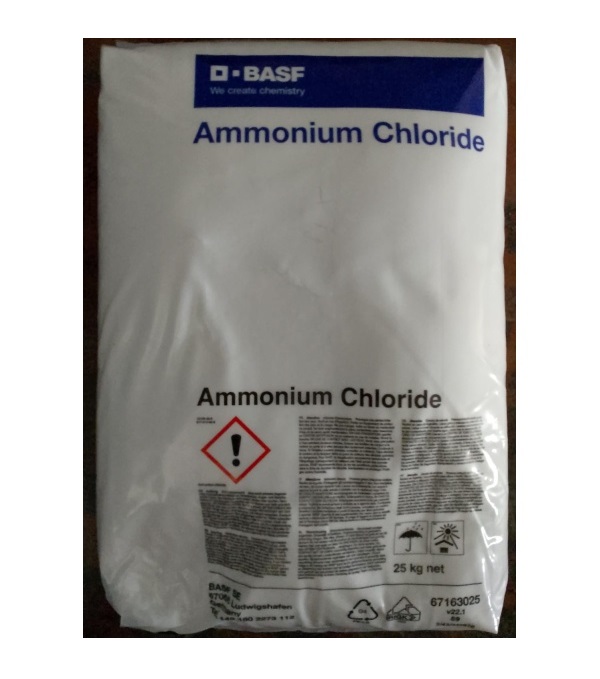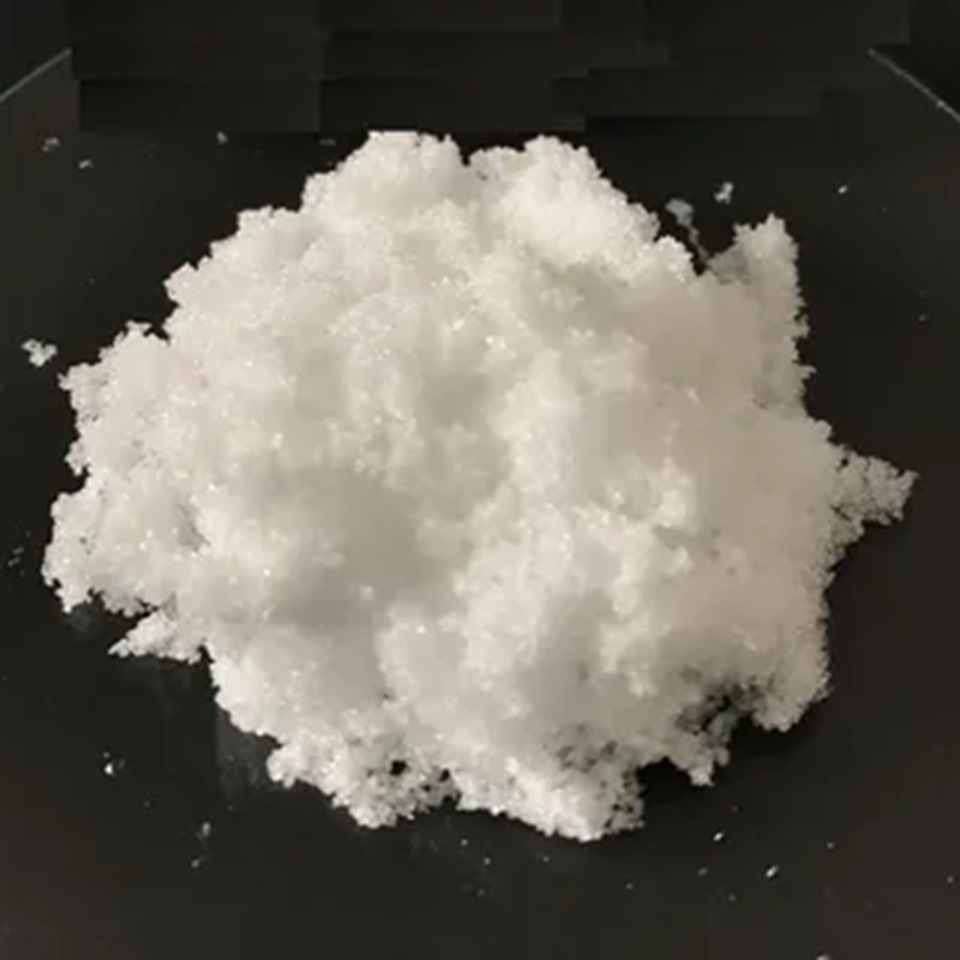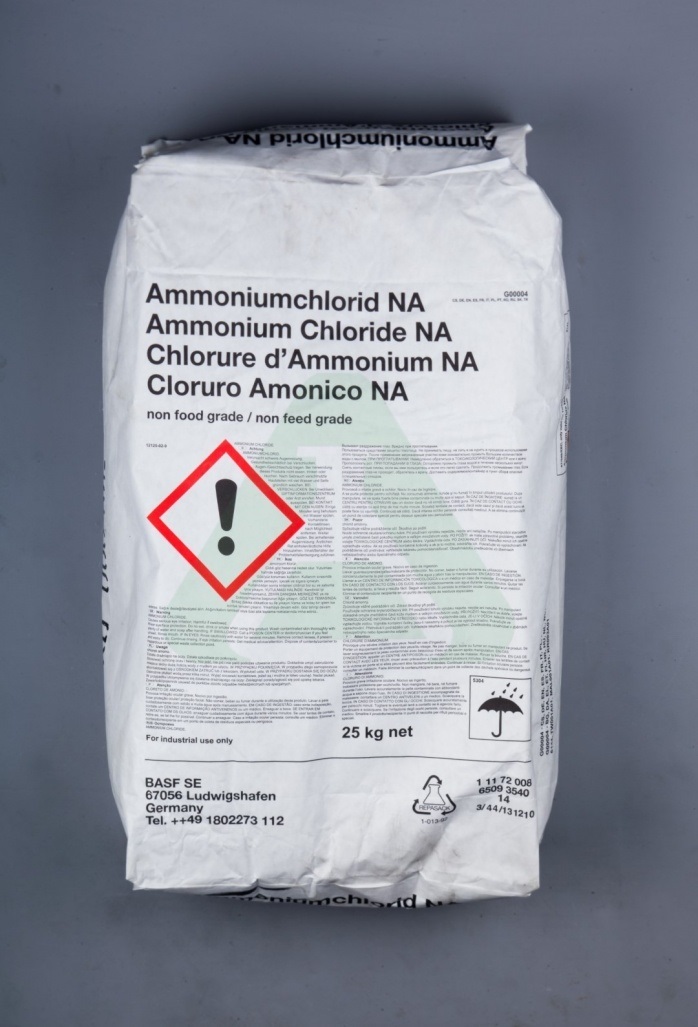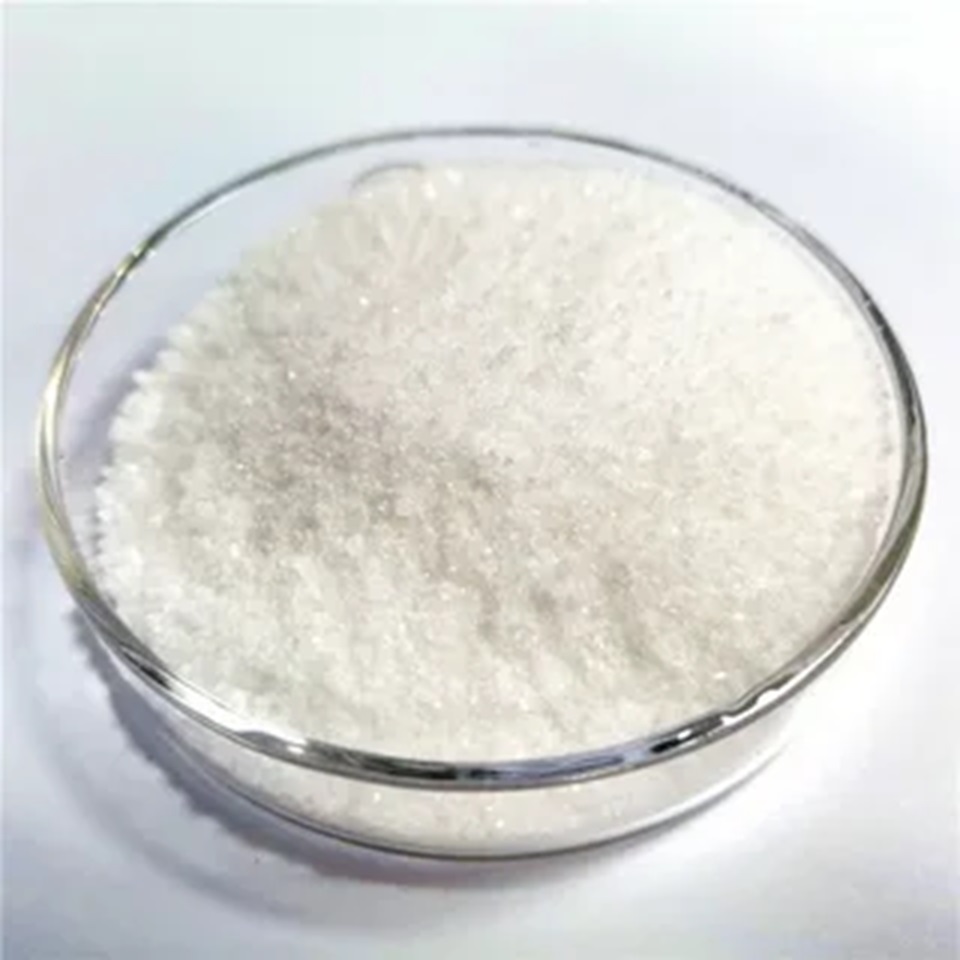We unleash your business potential by maximize the business innovation.
Send EmailAmmonium Chloride, Ammonium Muriate, Sal Ammoniac, Salmiac, Amchlor, Darammon, Salammonite, 12125-02-9
CAS: 12125-02-9
Molecular Formula: NH4Cl
Names and Identifiers
| Name | Ammonium chloride |
| Synonyms | Salmiac Amchlor Darammon Salammonite Sal ammoniac ammonium muriate ammonium chloride Ammonium chloride |
| CAS | 12125-02-9 |
| EINECS | 235-186-4 |
| InChI | InChI=1/ClH.H3N/h1H;1H3 |
Physico-chemical Properties
| Molecular Formula | NH4Cl |
| Molar Mass | 53.4916 |
| Melting Point | 340-341℃ |
| Water Solubility | soluble |
| Physical and Chemical Properties | Traits colorless cubic crystals or white crystals. The taste was salty, cool and slightly bitter. The relative density of 1.527 soluble in water, soluble in liquid ammonia, slightly soluble in alcohol, insoluble in acetone and ether. |
| Use | Used in medicine, dry battery, fabric printing and dyeing, fertilizer, tanning, electroplating, detergent, etc. |
Risk and Safety
| Hazard Symbols | Xn - Harmful |
| Risk Codes | R22 - Harmful if swallowed R36 - Irritating to the eyes |
| Safety Description | S22 - Do not breathe dust. |
| UN IDs | UN 9085 |
Upstream Downstream Industry
| Raw Materials | Carbon Dioxide Ammonia Potassium chloride Sodium Chloride Ammonium Bicarbonate Ammonium nitrate Ammonium nitrate Hydrochloric acid |
| Downstream Products | Ammonium dichromate Calcium carbonate Ammonium paratungstate Vanadium pentoxide Silane 4,4'-oxybisbenzenamine Nitrilotriacetic acid Methyl 3-oxopentanoate ethylmaltol Dichloroisocyanuric acid, sodium salt 3,4-Dichloro-1,2,5-thiadiazole |
Nature
colorless crystals or white crystalline lumps or powders. Tasteless. Moisture absorption and caking. d25 L. 5274. Soluble in water (W/W):22. 9%(o-C);26. 0%(15 C); 28. 3% (25 °c);39.6%(80 °c).RONG soluble in glycerol, methanol, ethanol, insoluble in acetone, ethyl ether, ethyl acetate. It was heated to 337.8 °c and sublimed and decomposed into ammonia and hydrogen chloride. The pH of the aqueous solution was 5.5(1%) and 5.1(3%)1 5.0(10%) at 25 ℃. The acidity of the aqueous solution was enhanced by heating. Corrosive to ferrous metals and other metals. Greater corrosion to copper. No corrosive effect on pig iron. An explosive reaction occurs with potassium chlorate or Bromine trifluoride. A vigorous reaction occurs with iodine heptafluoride and the like. And hydrogen cyanide to form explosive nitrogen trichloride. By high heat decomposition, release of toxic smoke.
Preparation Method
pure aqueous ammonia (25%) was cooled with cold water and carefully neutralized in portions with hydrochloric acid. If the solution is acidic, ammonia is added to be weakly alkaline. The solution was heated to boiling, filtered and the filtrate evaporated until a crystalline membrane appeared. Cooling, crystallization, that is, ammonium chloride.
Use
Analytical reagents. For the determination of uric acid, synthetic fiber viscosity test, electroplating bath additives, metal welding flux and the preparation of ammonia buffer. Also used for tanning, precision casting, making candles, adhesives.
Safety
intramuscular injection of LDso in rats: 30mg/kg; Oral LD50t 1650mg/kg in rats. Harmful to the body after inhalation, ingestion or absorption through the skin. It has a stimulating effect on the eyes, skin and mucous membranes. Staff should be protected. If the skin and eyes are touched, they should be immediately rinsed with flowing water. Store in a cool, dry, well-ventilated warehouse. Keep away from fire and heat source. Keep the container sealed. Prevent moisture and rain. Should be stored separately from the alkali, oxidant, wet goods, food and chemical raw materials. Handling should be light and light unloading.



